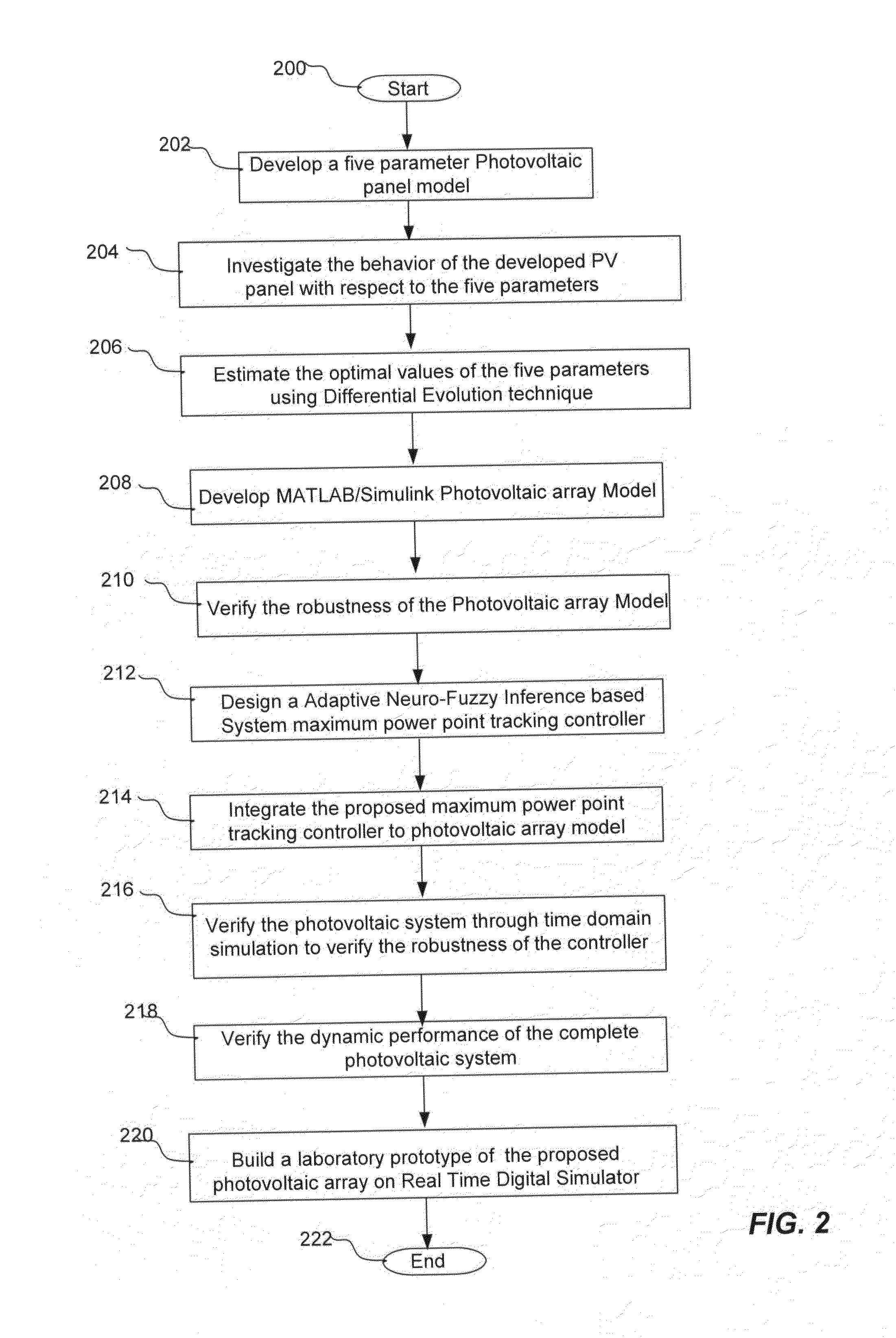Photovoltaic systems with maximum power point tracking controller
a photovoltaic system and maximum power point technology, applied in the field of photovoltaic systems, can solve the problems of unstable oil price and possible depletion of fossil fuel reserves
- Summary
- Abstract
- Description
- Claims
- Application Information
AI Technical Summary
Benefits of technology
Problems solved by technology
Method used
Image
Examples
Embodiment Construction
[0139]FIG. 1 is a block diagram of a present photovoltaic system embodiment. The PV system includes a photovoltaic array that generates a varying DC output voltage and current depending on the weather conditions, a buck / boost converter to step down / step up of the output voltage from the photovoltaic array, a DC link capacitor to connect the buck / booster converter to a load / inverter, wherein the load / inverter provides a grid output of the photovoltaic system, an adaptive network-based fuzzy inference maximum power point tracking controller to generate a reference voltage, a voltage control loop to compare the output voltage of the photovoltaic array to the reference voltage, and a proportional integral controller to maintain the output voltage of the photovoltaic array to the reference voltage by adjusting the duty ratio of buck / boost converter. Input of the proposed ANFIS-based MPPT controller is the ambient conditions, i.e irradiation and temperature and its output is the referenc...
PUM
 Login to View More
Login to View More Abstract
Description
Claims
Application Information
 Login to View More
Login to View More - R&D
- Intellectual Property
- Life Sciences
- Materials
- Tech Scout
- Unparalleled Data Quality
- Higher Quality Content
- 60% Fewer Hallucinations
Browse by: Latest US Patents, China's latest patents, Technical Efficacy Thesaurus, Application Domain, Technology Topic, Popular Technical Reports.
© 2025 PatSnap. All rights reserved.Legal|Privacy policy|Modern Slavery Act Transparency Statement|Sitemap|About US| Contact US: help@patsnap.com



